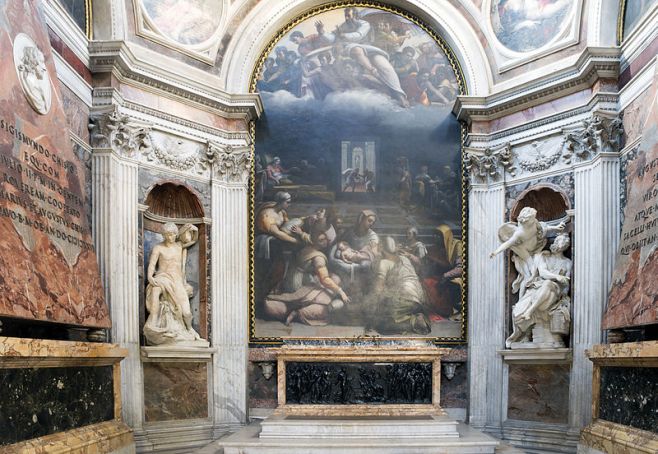Discover the Rome of Renaissance genius Raphael
High Renaissance artist and architect Raffaello Sanzio da Urbino, better known as Raphael, was born in Urbino in central Italy in 1483 and spent the last decade of his life in Rome.
Raphael is considered part of the trinity of great masters from the Renaissance era, alongside his two rivals Michelangelo and Leonardo da Vinci.
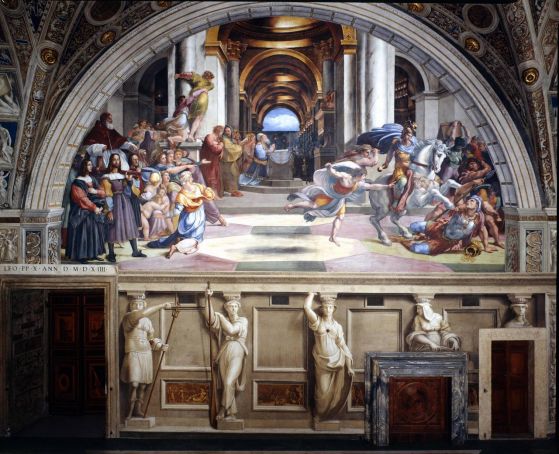
Despite dying at the age of 37, Raphael was highly regarded in his own lifetime and was hugely productive throughout his short life, gaining major commissions from two popes: Julius II and Leo X.
Raphael is, of course, buried in the Pantheon. Five centuries after his death in 1520, Raphael's genius lives on, his legacy still astounding viewers to this day.
Below is a list of places where his work can be found in Rome.
Vatican Museums
The Vatican Museums host four Raphael Rooms or Stanze: Room of Heliodorus, Room of the Signatura, Room of the Fire in the Borgo, and the Room of Constantine, the last of which was completed in 1524 by Raphael's students.
The frescoed rooms formed part of the apartment situated on the second floor of the Pontifical Palace, the chosen residence of Pope Julius II della Rovere (1503-1513).
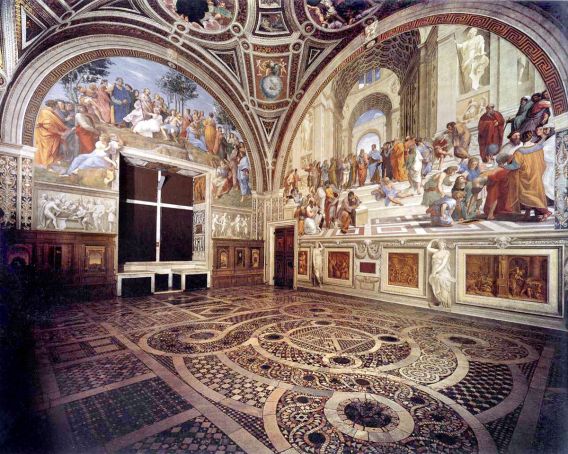
Pinacoteca, Vatican Museums
The Crowning of the Virgin (1503) and Madonna di Foligno (1511) flank one of Raphael's greatest masterpieces: The Transfiguration (1520) in Room VIII of the Vatican's Pinacoteca.
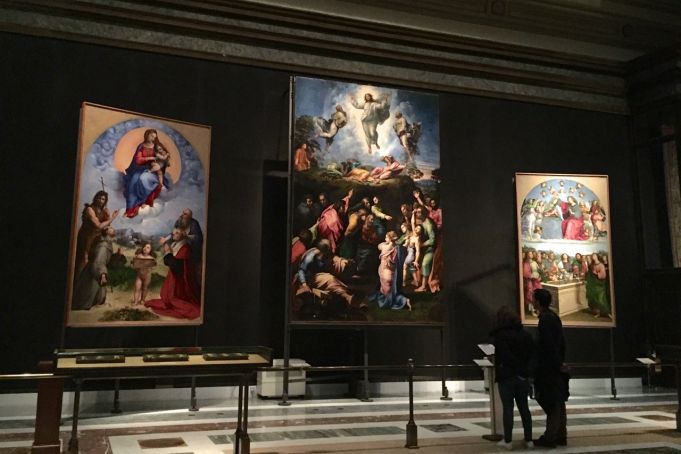
Palazzo Barberini, Via delle Quattro Fontane 13
Italy's national gallery of ancient art at Palazzo Barberini houses Raphael's portrait of Raphael’s muse and mistress: Margherita Luti, the daughter of a baker in Trastevere, hence known as La Fornarina.
One of the gallery's most popular works, the portrait was considered provocative when it was painted in 1519, featuring the bare-breasted woman with Raphael's signature on her bracelet.
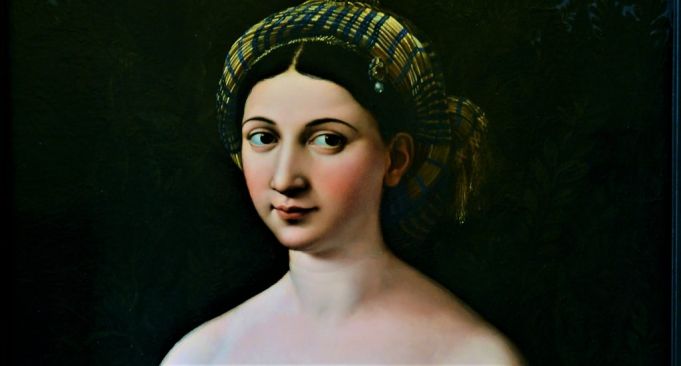
Villa Farnesina, Via della Lungara 230
Containing the frescoes of several artists, The Loggia of Galatea at Villa Farnesina is named after the nymph Galatea painted by Raphael in 1514, while the Loggia of Cupid and Psyche features frescoes representing episodes from the fable of Psyche, completed by Raphael and his students in 1518.
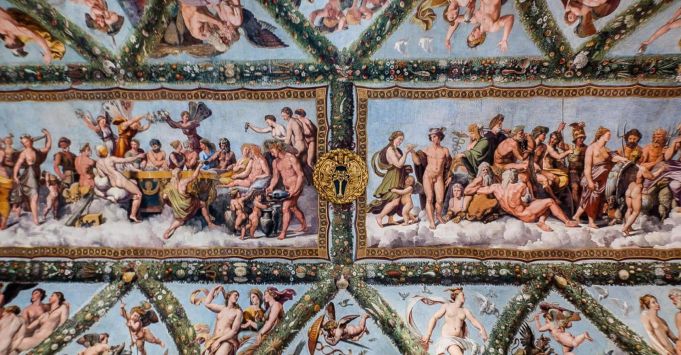
Galleria Borghese, Piazzale Scipione Borghese 5
There are three Raphael paintings in the collection of Galleria Borghese: The Deposition of Christ (1507), Portrait of a Man (c. 1502) and Portrait of Young Woman with Unicorn (c. 1506).
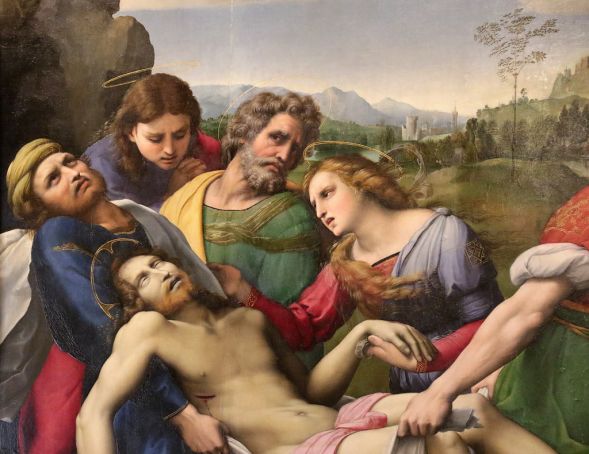
Basilica di S. Agostino, Via di S. Eustachio 19
The third pillar on the nave of the Church of S. Agostino features Raphael’s fresco of The Prophet Isaiah, said to be influenced by Michelangelo's Sistine Chapel and completed between 1511 and 1512.
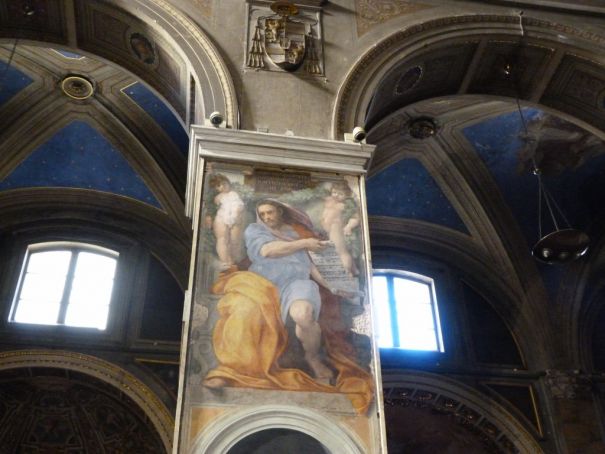
Chiesa di S. Maria della Pace, Arco della Pace 5
The Sybils, or Sybils receiving instruction from Angels, was painted in 1514 as part of a commission that Raphael received from the Sienese banker Agostino Chigi to decorate the interior of the Church of S. Maria della Pace, located near Piazza Navona.
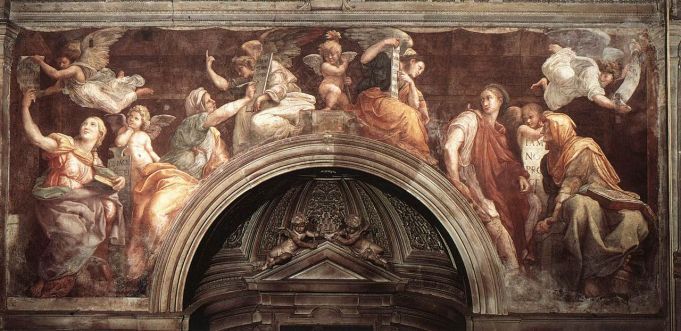
Doria Pamphilj Gallery, Via del Corso 305
This austere double portrait is generally believed to depict Venetian noblemen Andrea Navagero and Agostino Beazzano, however mystery remains as some critics argue that the two men would have appeared much younger-looking when the work was completed in 1516.
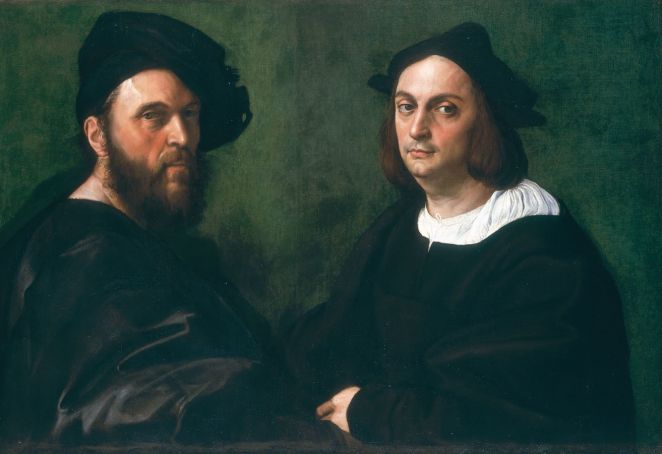
Architecture
In addition to being one of the principal architects of St Peter's, Raphael designed the Church of S. Eligio degli Orefici (1509), the Cappella Chigi (1513-1514) at the Basilica di S. Maria del Popolo, and the Loggia di Raffaello (1514-1519) at the Apostolic Palace in Vatican City.
